You are finally ready to share your questions, ideas, research, and conclusions with the world. You have your manuscript reviewed and accepted by the chosen journal. EXCITMENT. You are about to sign the copyright agreement… STOP! Do you know what you are agreeing to? Will you be able to use or share this article after it is published?
In this post, we discuss how to use SHEPRA RoMEO to learn publisher copyright policies and self-archiving for future use and sharing of your published work on social media.
— The Social Mediums
As you ready to publish, you need to know the policies different journals have. Some journals require you to relinquish your copyright – forcing you to ask permission or even pay to share your article with students, colleagues, and the public. Other journals allow you to retain some rights, like the right to post your pre-printed manuscript online but not the post-printed version. But some journals will actually leave copyright in your hands when all you need is to simply give the journal a non-exclusive license to publish the article.
SHEPRA RoMEO is a free online resource, where you can find summaries of self-archiving permissions and conditions of rights given to authors by different publishers around the world. Its main appeal is the ability to search on a journal-by-journal basis or on an archiving policy category.
The simple search allows you to search a specific journal title/ISSN or publisher name.
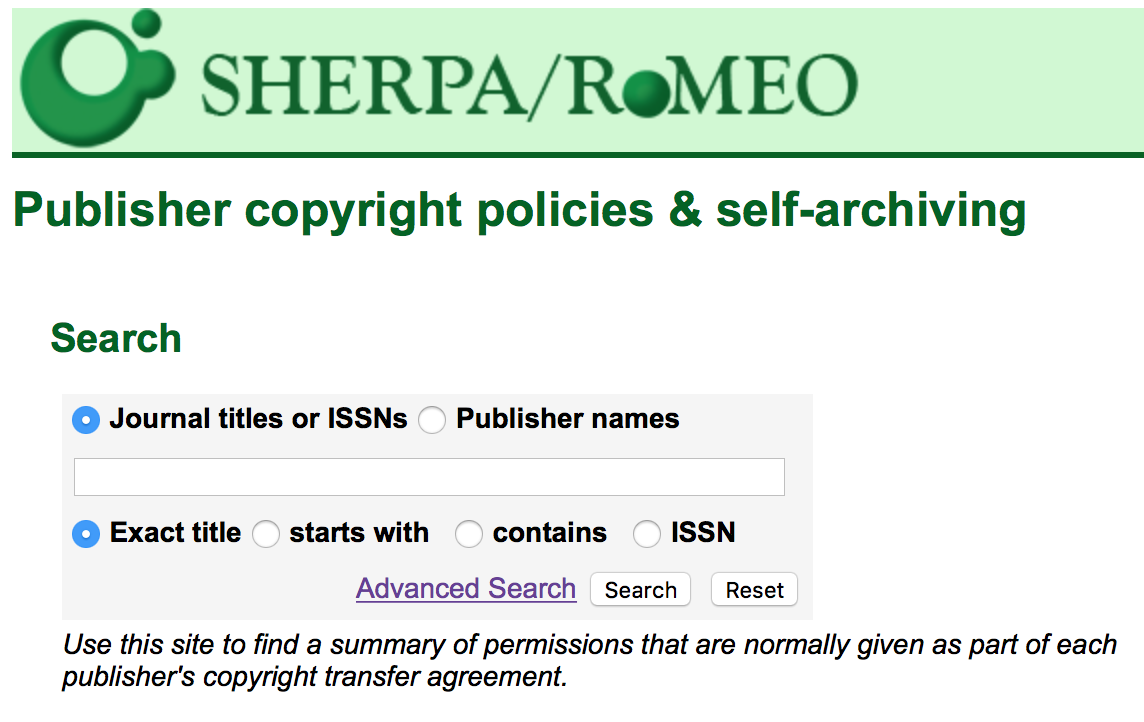
Or the advance search will add an option of searching by RoMEO colour/ ID/ update date, viewing a list of all publishers, or you can filter by the country the journal is published in.
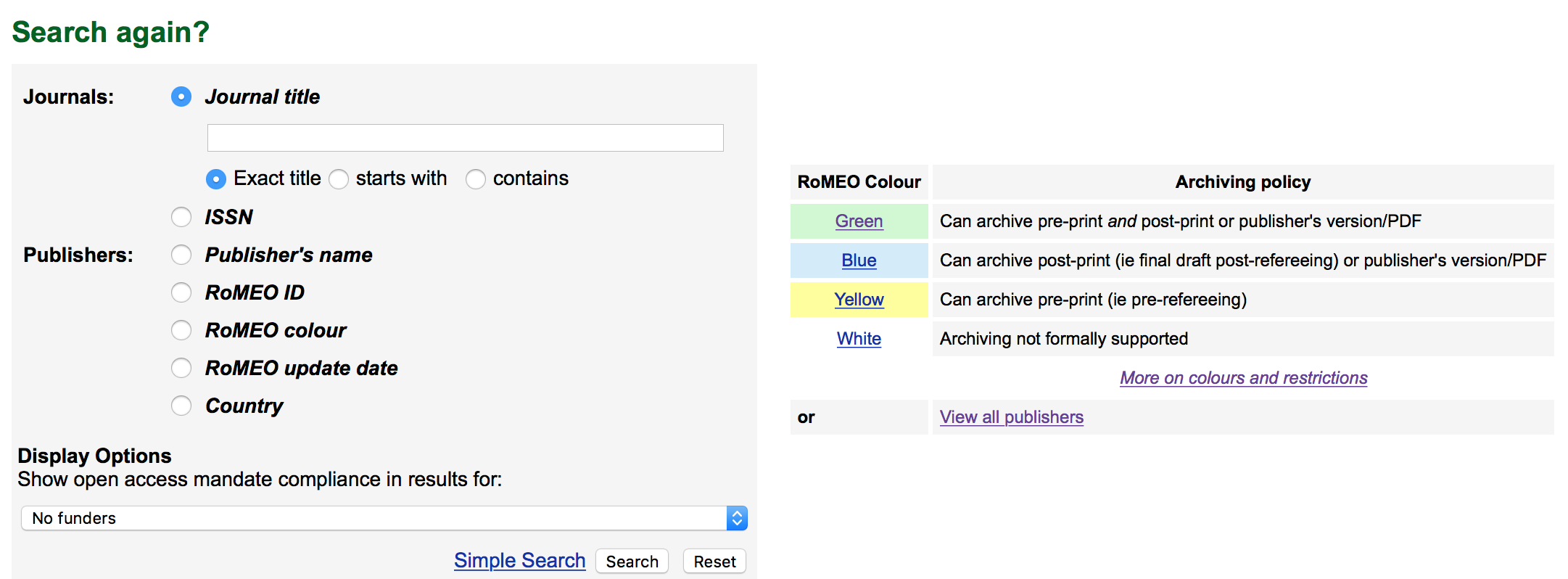
The RoMEO colour categories journals based on their archiving policy:
Green – can archive pre-print and post-print or publisher’s version/PDF
Blue – can archive post-print (ie final draft post-refereeing) or publisher’s version/PDF
Yellow – can archive pre-print (ie pre-refereeing)
White – archiving not formally supported
To be clear, RoMEO’s definition of pre-prints is being the version of the paper before peer-review and post-prints is being the version of the paper after peer-review with revisions having been made, or the article as published.
Important to note that different publishers will allow different post-prints formats for share by the author. Some publishers will reserve for themselves their own arrangement of type-setting and formatting so the author cannot use the publisher-generated .pdf file, and must make its own .pdf version for submission to a repository. Other publishers insist that authors use the publisher-generated .pdf, making sure that their material is seen as a professionally produced .pdf consistent with their own house-style.
For example, you may consider publishing an article about Chemical Education. The ‘Journal of Chemical Education’ by the American Chemistry Society (ACS) publisher will allow the author to archive pre-printed and post-printed (author .pdf only) versions but with few restrictions and conditions.
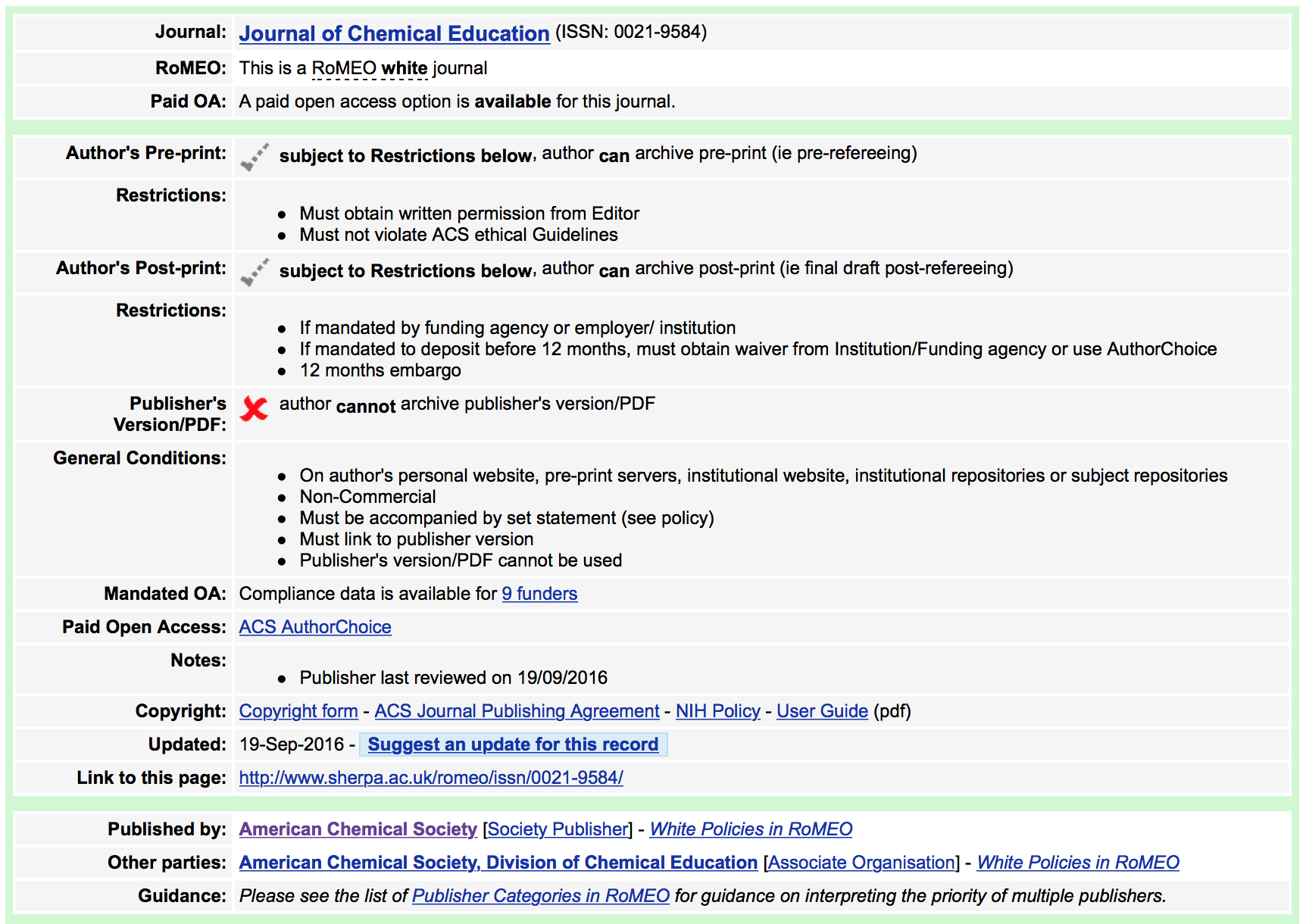
The ‘Education in Chemistry’ by the Royal Society of Chemistry prohibits the author to archive pre-printed and post-printed versions of the article in any form.
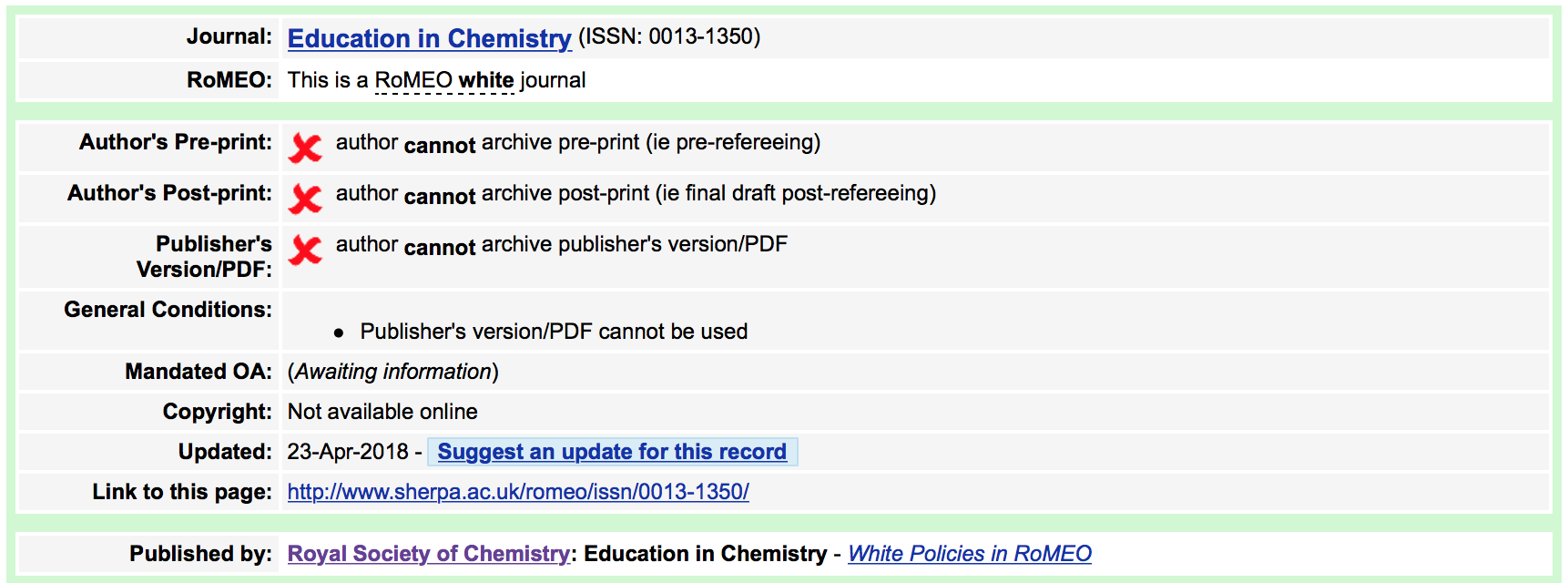
On the other hand, ‘Journal of Science and Technology Education Research’ by the Academic Journals publisher will allow the author to archive pre-printed and post-printed versions, both author and publisher’s .pdf. Thus, categorized as a green journal.
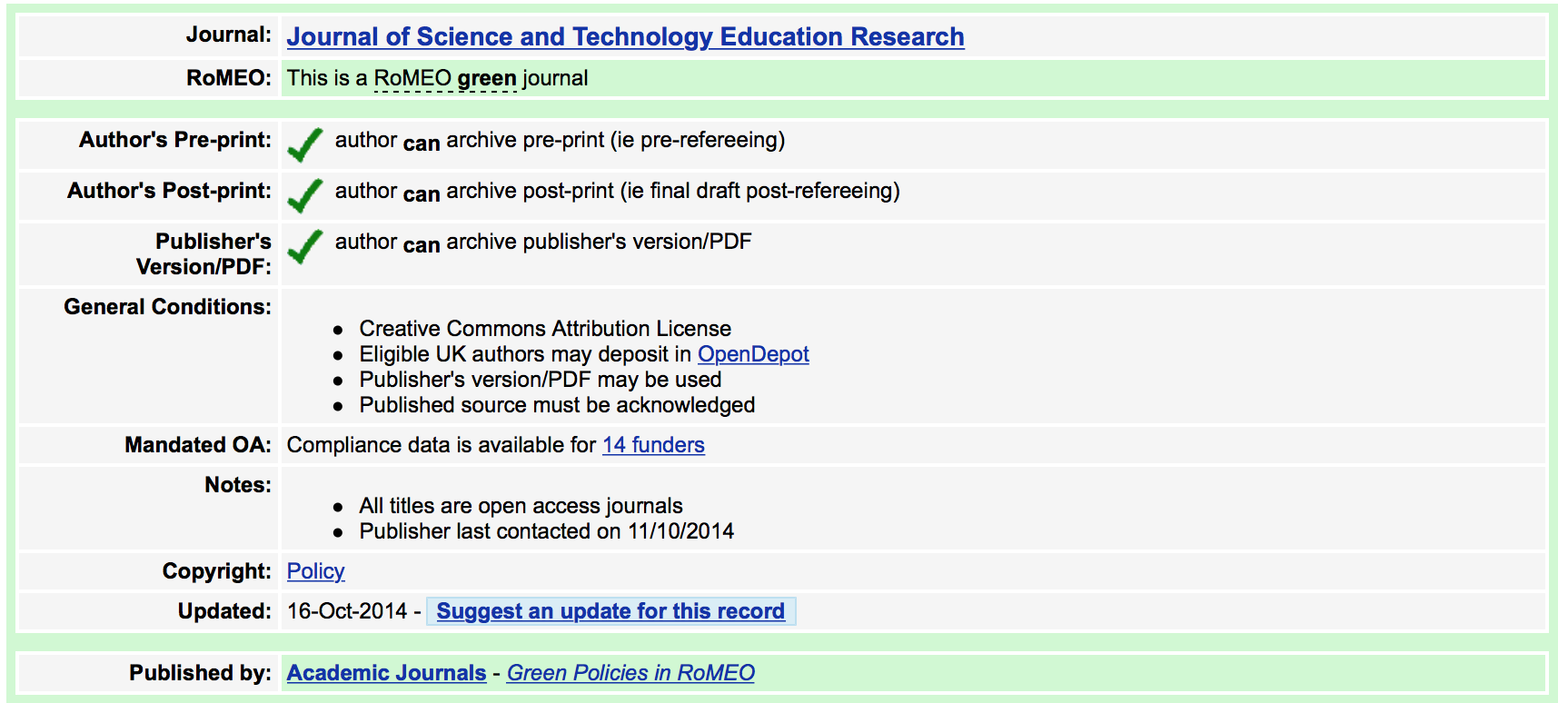
The copyright and archiving policies as summarized by RoMEO for the different journals are the default policies. Changes or exceptions can often be negotiated by authors. If you know your rights and you know what type of impact and reach you want with your published work – you can choose the best journal for it and negotiate wisely.

